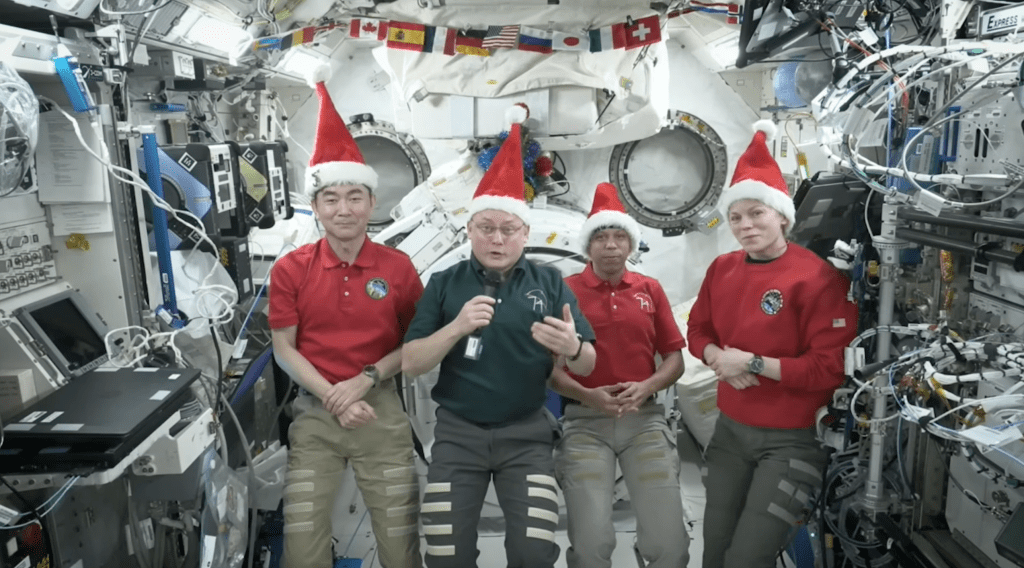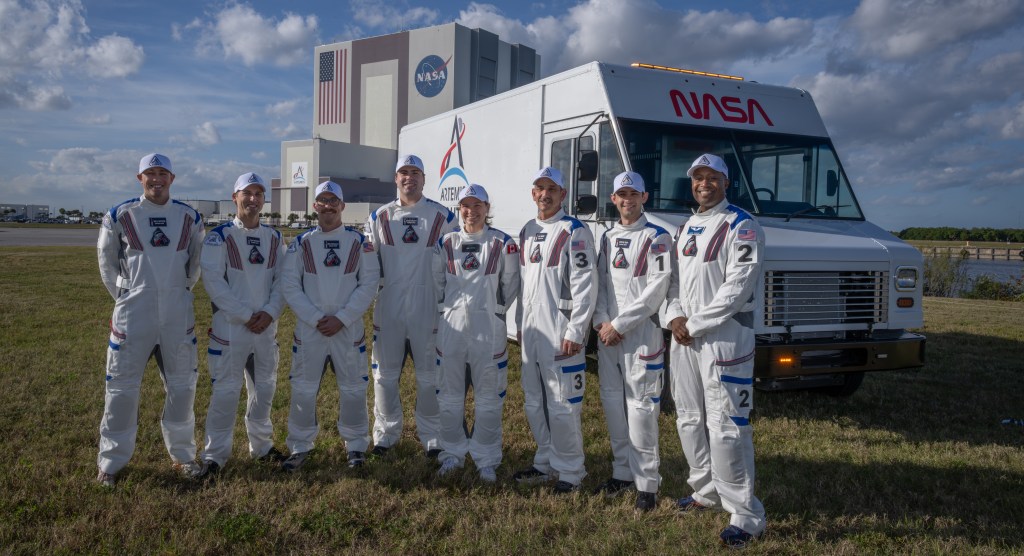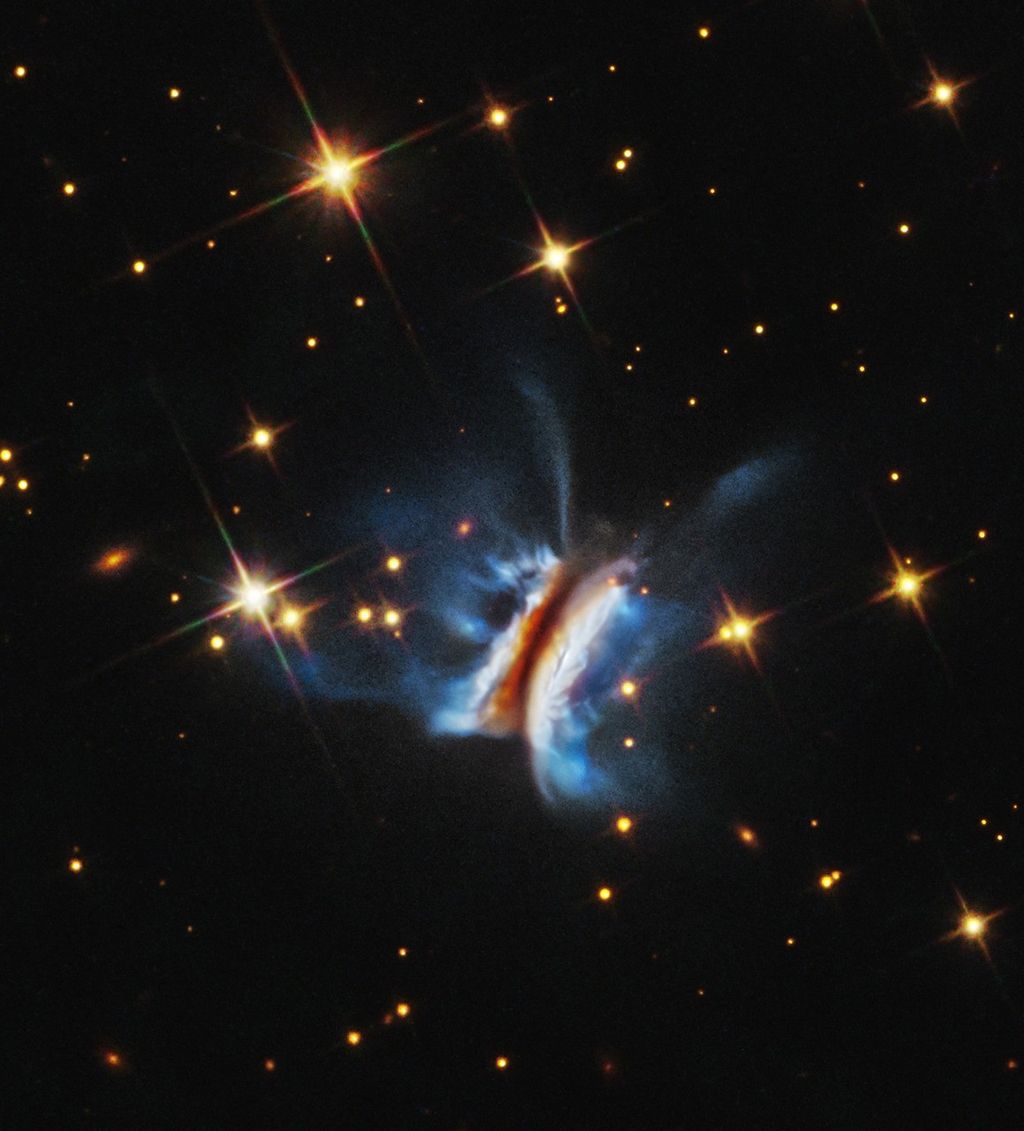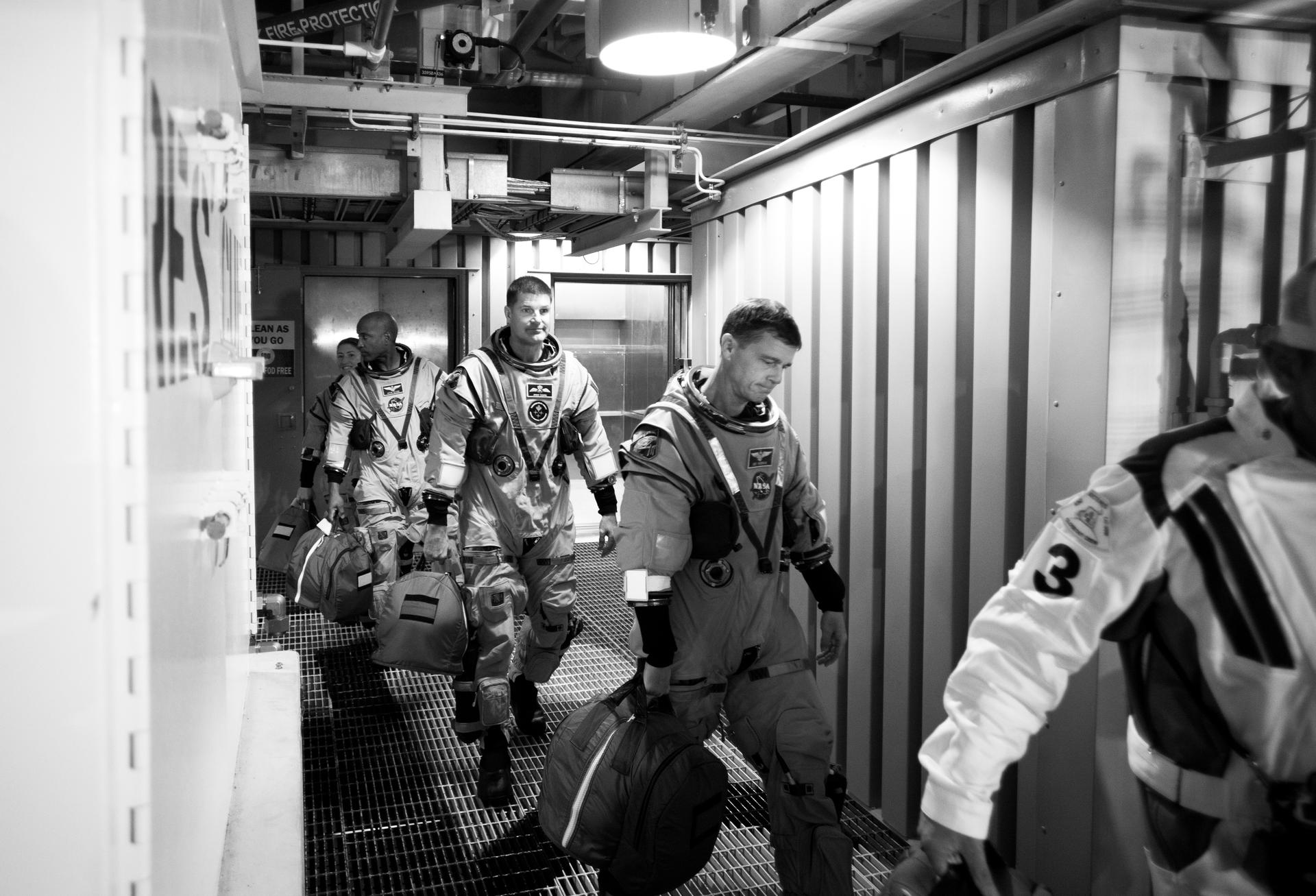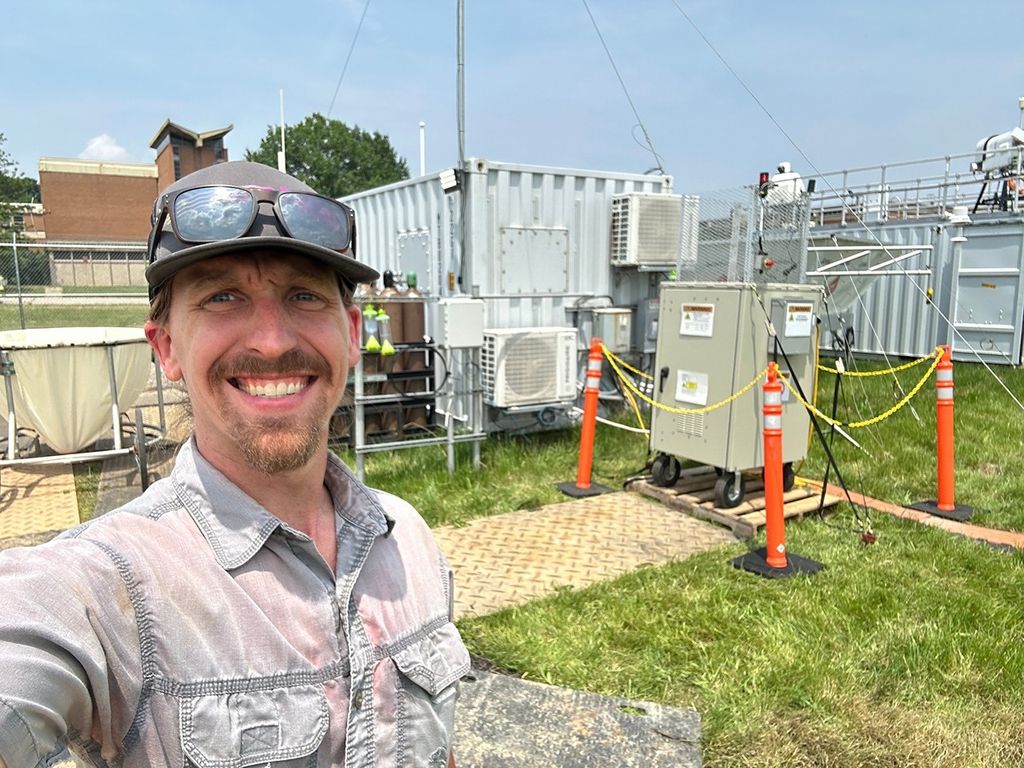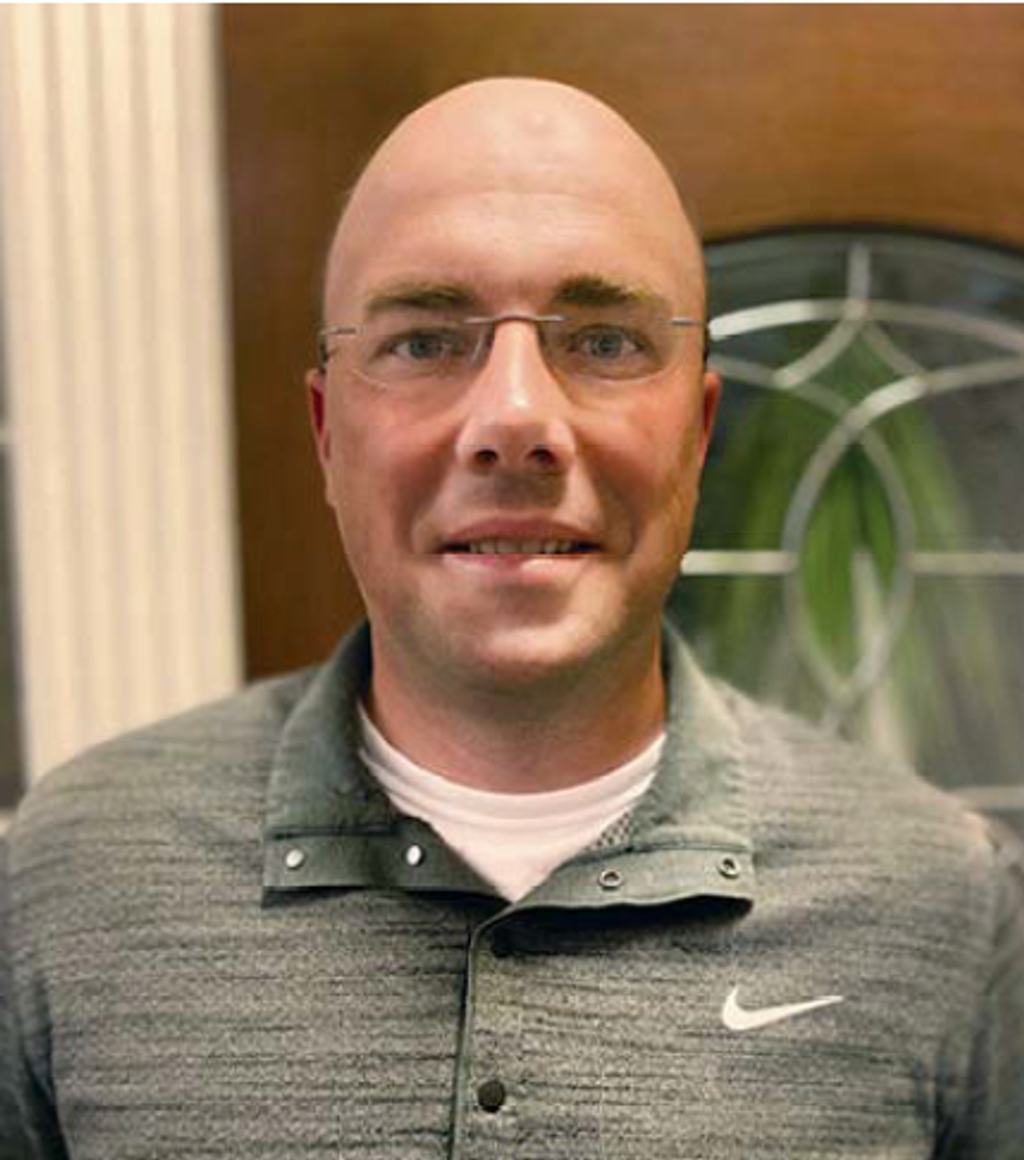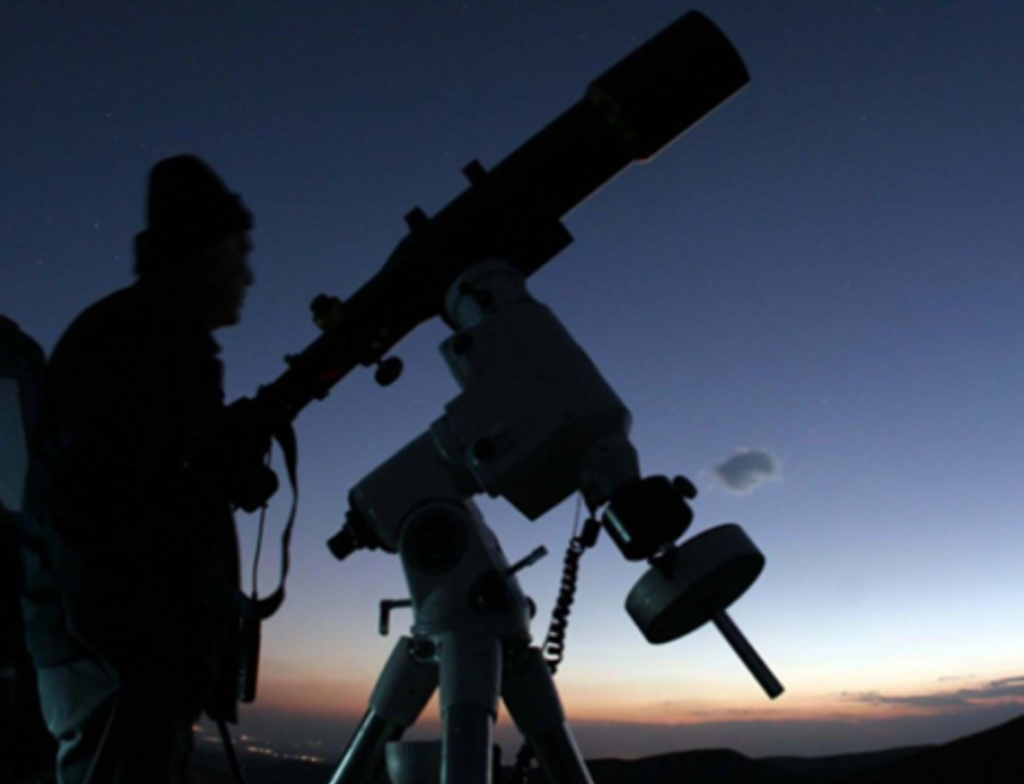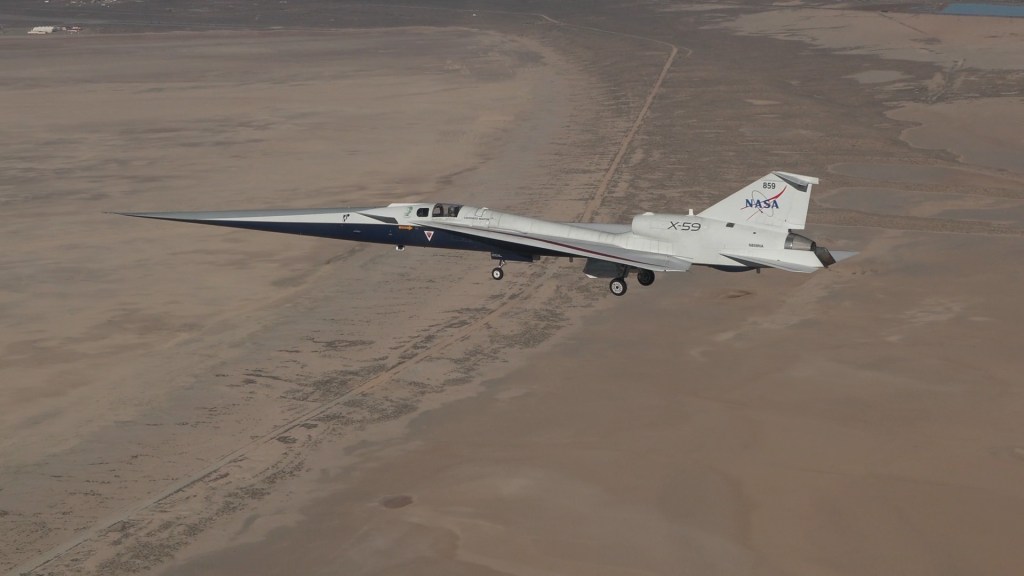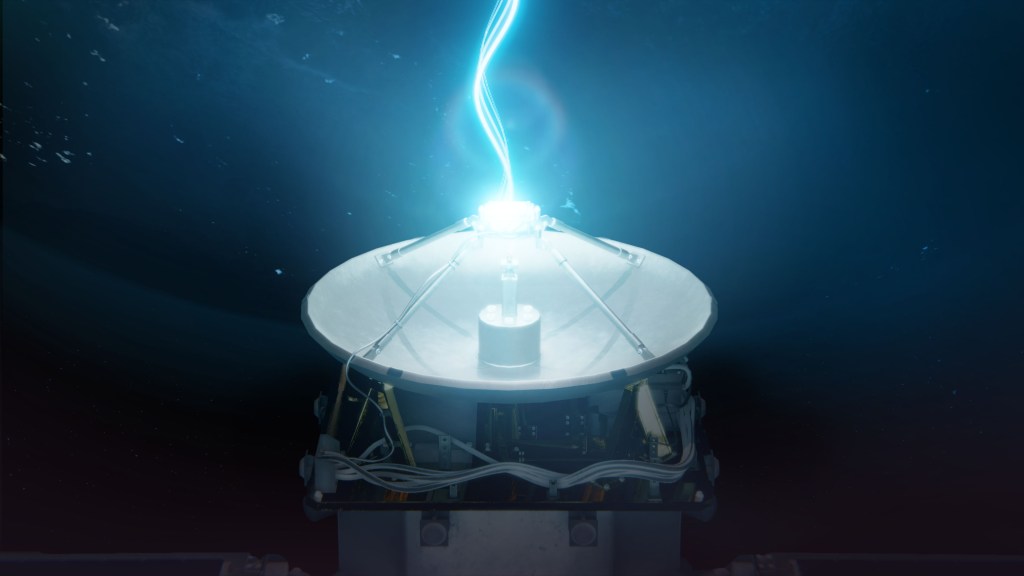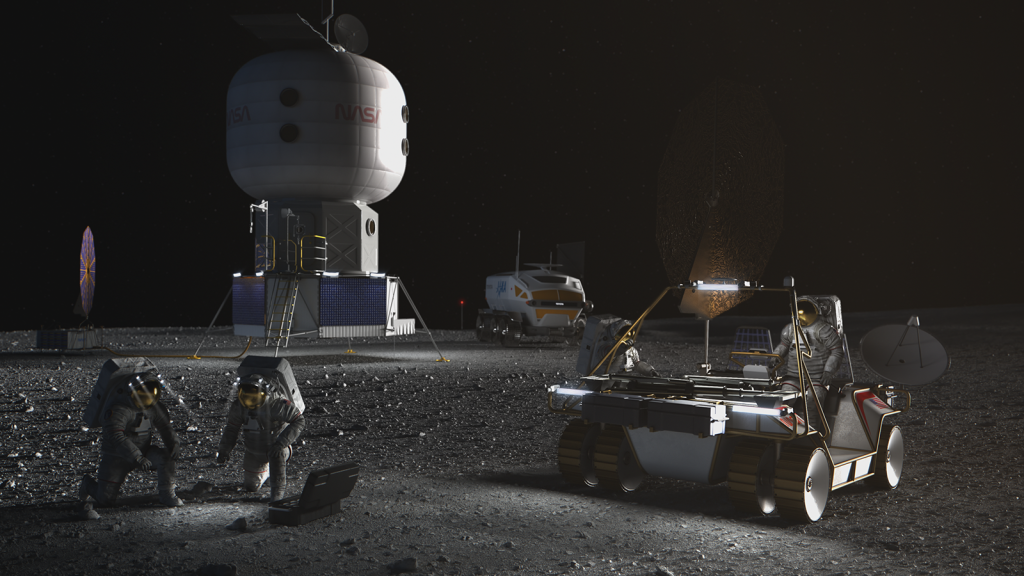
From Earth orbit to the Moon and Mars, explore the world of human spaceflight with NASA each week on the official podcast of the Johnson Space Center in Houston, Texas. Listen to in-depth conversations with the astronauts, scientists and engineers who make it possible.
On episode 395, USACE Chief Historian John Lonnquest shares the legacy of the U.S. Army Corps of Engineers and their role in building NASA’s spaceflight infrastructure. This episode was recorded July 10, 2025.

Transcript
Dane Turner
Houston, We Have a Podcast. Welcome to the official podcast of the NASA Johnson Space Center. Episode 395: Constructing NASA Infrastructure. I’m Dane Turner, and I’ll be your host today on this podcast, we bring you the experts, scientists, engineers and astronauts, all to let you know what’s going on in the world of human spaceflight and more.
The US Army is celebrating its 250th anniversary, predating even the signing of the Declaration of Independence. The army is marking this historic milestone by celebrating its legacy and the work it has accomplished, including collaborations with partners across the government, like us here at NASA and what a legacy that is, having had a hand in the construction of multiple NASA centers and rocket launch pads on both sides of the country. The US Army Corps of Engineers, or USACE for short, has been instrumental in the creation of the infrastructure that is vital to the country’s space program.
To find out more about the US Army Corps of Engineers role in building this infrastructure, we have Chief Historian for the US Army Corps of Engineers. John Lonnquest, let’s find out more about this historic partnership.
<Intro Music>
John, thanks for joining us on Houston We Have a Podcast today.
John Lonnquest
Happy to be here.
Dane Turner
We’re really glad to have you on today to celebrate the US Army’s 250th anniversary and to tell us about the US Army Corps of Engineers history with NASA. But let’s start by getting to know you. You’re the Chief Historian for the US Army Corps of Engineers. Can you tell us where you’re from and how you got to be where you are now?
John Lonnquest
Sure. My father was a naval officer, so I grew up, grew up on or around naval stations all over the East Coast. As a kid, I was the little boy in elementary school who was always in love with the people and events of the past. So I guess it was no, no, no surprise that I ended up getting a history undergraduate degree at Washington College, which is across the Chesapeake Bay in Chestertown, Maryland. I later went on to Duke University, where I got my PhD. At Duke, my focus areas where the history of technology and military history, and I ended up writing my dissertation on the Air Force’s first generation ICBM, the Atlas ballistic missile. And as a part of that exercise, I learned about the Corps of Engineers and all the facilities that it built for the Air Force. Queue forward a couple years, I wrote my first book on the development of the America’s Cold War missile program. Was an Air Force historian for a couple years, and then in 2000 joined the US Army Corps of Engineers Office of History as a part of Headquarters. Over the last 25 years, I’ve been the director of their Oral History Program, field history program, Iraq and Afghan Gulf study teams, and then I’ve been the chief of the office since 2008.
Dane Turner
Wow. So it sounds like you’ve got a lot of experience with a lot of things that we’re going to be talking about today.
John Lonnquest
Hopefully so.
Dane Turner
So can you give us kind of an overview of what the Corps of Engineers is and who makes up the Corps, and has it been a part of the army since its founding 250 years ago?
John Lonnquest
It has very much been a part of the army. So what we need to remember is that on 16, June, 1775, the Continental Congress authorized then General George Washington to hire a chief engineer, and that’s the birth of the army engineer branch, and by extension, the US Army Corps of Engineers. However, the permanent corps wasn’t established until 1802 when our third president, Thomas Jefferson, established the United States Military Academy at West Point, and he put that under the control of the Corps of Engineers. And when Jefferson established West Point, he did so for really two reasons, one to train engineer officers for the army, but then also to train engineers to facilitate the growth of the young republic. Because remember that in 1800 the United States was a small nation, agrarian nation of about 5 million people. So to grow, we needed infrastructure. So initially, the Corps of Engineers only built coastal fortifications. Think Fort McHenry is one of our projects. But that changed in 1824 with the passage of the general survey Act, which authorized Congress and the president to use the Corps of Engineers for internal improvements, primarily inland navigation to facilitate commerce and the transport of military supplies and people. So that was the origin of the core Civil Works program, and it’s grown slowly ever since.
Dane Turner
So, with that, we’re talking like roads and canals and stuff, is that? Is that? Right?
John Lonnquest
Yeah, what we’re talking there is, is mainly for the Corps of Engineers navigation. So that’s levees, that’s dredging, that’s later locks and dams.
Dane Turner
Okay.
John Lonnquest
but remember that the Corps of Engineers is growing in lockstep with the army and the nation. So as the American population grows and we have people surging to first the Ohio River Valley and then the Mississippi River Valley, all of a sudden we need reliable transportation for farmers to get their crops to market, but we’re also really dealing with the vicissitudes of Mother Nature. Flooding gets to be a progressively more important part of what we do. So the first federal movement towards what we then called flood control, now we call flood damage risk reduction, was in 1879 Congress chartered the Mississippi River Commission, and a very small part of its mandate had to do with flood control. Over the years, that flood control mandate became more definitely expressed, first in 1917 along the Sacramento and American rivers. And then we had the debilitating Mississippi River floods in the ‘20s. And then finally, that culminated in the Flood Control Act of 1936 so now flood control is a federal entity, so the Corps of Engineers continues, its mission continues to grow as the nation grows. So in 1920s the Congress charter the Corps of Engineers to prepare what we call these 308 reports. And these were studies of river watersheds with the idea of using multi purpose planning. So that’s not just you, not just looking at navigation, but now we’re looking at at water use, resource use, and a host of other things. So those 308 reports became the basis for a lot of civil works projects that came later. Most importantly, the Depression era Corps of Engineer works. So in the during the Depression, the federal government turned to the Corps of Engineers to build badly needed infrastructure, but also to put large parts of the American population back to work. So but then, you know, we talked early in this description of the Corps of Engineers about coastal fortifications. Well, that was initially for the 19th century all the Corps of Engineers did; early 20th century as well. However, in 1941 with the nation getting ready for World War Two, President Roosevelt decided that he wanted to take the construction division of the US Army quartermaster. They had done all the mental military construction before, and in November of that year, they gave that mission to the US Army Corps of Engineers. The idea was that they wanted the quartermaster control, the Quartermaster Corps to focus on beans and bullets. So the Corps of Engineers gets its military modern military construction mission in 1941 huge World War Two construction program. Also there’s the Manhattan Project. And then after the war, for the first time, the United States elects to maintain a large time, a large peacetime military establishment. The Corps’ military construction mission continues to grow. And then there’s one other important thing that we should talk about, and that’s emergency operations. So, you know, the Corps of Engineers, we have engineer districts all over the United States, many along inland waterways. And we have floating plant, that’s what we call boats, or vessels to carry goods and do work on those rivers. In 1882 Congress asked the Corps of Engineers to distribute supplies to the survivors of a flood along the Mississippi River. And then over time, that mission has expanded substantially. Think the 1906 San Francisco earthquake and all along today and and right now, that’s one of the Corps’ most visual missions that we work with FEMA.
Dane Turner
Wow. So it sounds like the core is instrumental to America’s waterway infrastructure, in particular.
John Lonnquest
Waterways, and then subservient to that, we have environmental actions and an awful lot of things that touch many Americans each and every day.
Dane Turner
That’s fascinating. And is the workforce all military, or are there civilians involved as well?
John Lonnquest
Great question. So the US Army Corps of Engineers has about 35,000 civilians and approximately 900 military members, and those in that combined workforce is scattered at eight engineer divisions, 44 engineer districts. And I think we’ve got eight centers and labs and a bunch of Centers of Expertise. So we have a nationwide and a worldwide presence. So we’ve got an engineer district in in Seoul, Korea, in Tokyo, Japan, in Germany, in Alaska, in Hawaii. So we have a nationwide presence and worldwide presence.
Dane Turner
Wow. So with that storied history right there, how and when did the Corps end up in Cape Canaveral, and what were they originally there to do?
John Lonnquest
Well, so you know, we have, again, we talked briefly about that, quote, incremental expansion of the military’s missile program. So the Corp’s first construction project at Cape Canaveral began in May of 1950 when they asked our Jacksonville district to build a launch facility at the Cape. At that point, the cape was pretty much undeveloped, so we dispatched three engineers from our Jacksonville office, and over the course of two months, they and a couple of contractors built the first launch pad, pad three at Cape Canaveral.
Dane Turner
So what was pad three meant to do?
John Lonnquest
Pad three was just meant to launch some of our early Army and Air Force missiles into low earth trajectories.
Dane Turner
Okay, so were these considered early ICBMs intercontinental, intercontinental ballistic missiles,
John Lonnquest
Not even close. So although the the Air Force had had a ICBM program since 1946 it was really a exploratory program. It was run by Convair Astronautics. Had 10 people on it, so it was not going to happen for an awfully long time. So basically, what we’re doing in the early 50s is incremental improvement. So we’re we’re experimenting with power plants, airframes, propellants and control equipment. So incremental improvements that lead us to the birth of the ICBM program, or the acceleration of the ICBM program in 1954
Dane Turner
Okay, so you’ve got these engineers who went out to build pad three, and they were out there at Cape Canaveral doing this. And you said that Cape Canaveral, at the time, was undeveloped. It was just the coastline of Florida, out in the Florida wilderness. Is that right?
John Lonnquest
Pretty much. So, yeah, yeah. So, so these guys were laying concrete and really producing the first launch pad at the Cape as the military was grappling with what its missile program was going to look like.
Dane Turner
Do you have any idea why they would have chosen Cape Canaveral?
John Lonnquest
I think it was one. There was existing Federal Real Estate there, it was cheap real estate. It was over water. So if one of these missiles crashed, we weren’t going to we weren’t going to impact people. And I think water borne transport and down and and and down range ranges were important for the early space program.
Dane Turner
And then, how did the support of USACE, then, then kind of evolve into the support of the of American civilian space program.
John Lonnquest
So there was, there was an important sort of intermediary step. In 1954 the Air Force elected to really accelerate its ICBM program. And that was brought on by Cold War tensions, the rapid evolution of thermonuclear weapons and that kind of thing. So in 1954 the Air Force accelerates its missile program to the nation’s highest priority, and it was highest priority comma above all others, comma. So the air force is developed, busy developing airframes and power plants, and it turns to the Corps of Engineers to help build the test and launch facilities for this new generation of weapons. It proved to be a challenging assignment, and that was based on several things. One, the Air Force, under its visionary leader, General Bernard Schriever, was developing these weapons concurrently. So they were doing research. To test evaluation and facilities construction all at the same time. So oftentimes, for the Corps of Engineers, that meant, when they made a change the missile design, we ended up ripping out concrete. Also as a hedge against failure, the Air Force was developing multiple ICBMs in case one didn’t prove up to par. So we started with the Atlas, and then we got the Thor intermediate range ballistic missile. And then we got the Titan one ICBM, the Titan two ICBM, and then later, the revolutionary solid fuel Minute Man. So to give you a sense of what these weapons were like the Atlas ICBM was 82 feet tall and weighed 267,000 pounds and so but more importantly, since the Air Force was developing and testing that was one thing, but it also wanted an operational ICBM by 1960 so that meant that the Corps of Engineers was building launch sites. And so we were building launch sites at various places across the country. And in many cases, those launch sites started with no protection, no over pressure protection against attack, and then they became progressively heart more hardened. So initially, the first Atlas was deployed on an open launch pad at Vandenberg with zero over pressure. And then we went to a horizontal configuration at five and then 25 psi. And then we went to a completely in ground configuration in the Atlas F, which was 100 protected against 100 psi. So the program expanded both in technological scope, it expanded in terms of its geographic footprint, and it expanded in the complexity of the facilities that the Corps of Engineers needed to build. So by the mid 1960s the Corps of Engineers has had established a separate missile construction agency called the Corps of Engineer Ballistic Missile Construction Office, or CEBMCO, that had 3000 people, and it was managing the construction of 22 different missile sites in 17 states, and some of those conditions were pretty arduous, i.e. that we were pouring concrete 24 hours a day in the middle of the winter in Montana.
Dane Turner
You mentioned over pressure. Can you give me a little more information on that? I’m not familiar with that.
John Lonnquest
So the idea is, blast creates pressure. So we have standard pressure at sea level, which is about 15 pounds per square inch. And then over pressure is an expression of the damage caused by a blast, incoming blast wall. So by raising the over pressure these of these facilities, that is indicative of the kind of blast they can withstand.
Dane Turner
Okay, so the Army Corps of Engineers is gaining this expertise in how to deal with all the complexities of a rocket launch, and so is that why they were then asked to help support NASA or its predecessors?
John Lonnquest
indeed. So the army had learned a lot, or the Army Corps of Engineers had learned a lot on its work, on the ICBM program, and much of that and that. Here we’re talking about building test and assembly buildings, building launchers, building fueling systems, was directly applicable to what NASA was going to be able with what NASA was going to be doing on its civilian space program. And so not only did we do we have experience on the technical aspects of missile development construction, we had management experience too that would really directly relate to what what Apollo was trying to do with the expansion this of the civilian space program.
Dane Turner
So let’s get into the facilities that USACE has supported for NASA, we’ve been talking about Canaveral, which has become Kennedy Space Center. Can you tell me about what facilities there?
John Lonnquest
Sure. So I think when we talk about the facilities that the Corps of Engineers built, maybe we want to back off just 1 degree, and talk about not only the facilities themselves, but linking those facilities together. So this really seems to me, as a historian of technology, to be a systems development issue. So, you know, at Kennedy, for example, we’re building facilities for assembly and check out for transporting the missile to the assembly area or to the launch area and that kind of thing. But then we’re also building a transportation system that’s going to take these tremendous boosters from the Michoud Assembly area in New Orleans to the Mississippi test facility and then to Cape Canaveral. So it is a really a system within a system. So, but within that larger context at Cape Kennedy, what the Corps of Engineers is doing is really building four huge projects. There’s the Vehicle Assembly Building, there’s the adjacent Launch Control Center, there’s that three mile long crawler way that carry the assembled booster and spacecraft to the launch site. And then there’s launch complex 39. So you know. And of those, those are all huge projects, but perhaps the Vehicle Assembly Building is, is the most notable technologically, I mean, so completed in 1966 Vehicle Assembly Building was 535, feet tall, and when completed, it was the largest building in the world by volumes of cubic area enclosed so it covered 7.4 acres. But just as remarkable as what was, what you could see above ground was what you couldn’t see below ground, and that is that, you know, the Kennedy Space Center is built in a marine environment. So we’ve got sand, shale, clay and bedrock. Limestone bedrock is 160 feet below the surface. So what we had to do was we had to drill 4200 and some 160 feet long steel pilings to support the vertical Vehicle Assembly Building and to keep everything straight and level.
Dane Turner
That’s incredible! That must have been a massive undertaking.
John Lonnquest
It was, indeed. And there’s a wonderful story of the chief of engineers going down to inspect the construction of the Kennedy Space Center, and he’s flying over in a helicopter, and he’s trying to get a sense of how tall the Vehicle Assembly is going to be. And he’s expressing this to his to the district commander, to which the district commander leans over, pats the pilot on the on the shoulder, and they have a brief conversation, and the pilot raises the helicopter to 535 feet. And then he and then the district commander looks over to the chief and says, Sir, we’re about at the top of where the Vehicle Assembly Building is going to be.
Dane Turner
So it it’s 500 plus foot up, and then 160 plus foot down that that’s no wonder is a huge building right there.
John Lonnquest
Yeah, yeah. And you know, there were, there were the other, the other centers that, that the Corps built elsewhere along the Gulf Coast.
Dane Turner
So we’re talking, you said, Michoud in in New Orleans, and then I’m sitting here at Johnson Space Center in Houston, Texas, which did the Army Corps have a hand in that?
John Lonnquest
Oh, a big one. In fact, the the head of the Corps of Engineers, NASA support office, a very talented officer, Major General Thomas Hayes, the third better known as Tommy Hayes said that construction of the Johnson Space Center was their most challenging assignment, because he said, and I’m quoting him here, “Fort Worth district started with a piece of land that had a wooden shack on it, and built it into a university type laboratory.” So built, built on approximately 1600 acres outside of Houston, Texas. The JSC was responsible for human spaceflight training and spaceflight Mission Control. And you know, when we’re talking about a facility like this, it’s, it’s instrumental to look at why they chose the site. What were the selection criteria, and so you know when, when they were looking at the JSC site, what NASA wanted was they wanted access to water transport for large barge. They wanted a moderate climate. They wanted access to a large commercial airport, and they wanted access to a large research university, in this case, rice. So the there was a long and protracted search program process, and then many, much of the acreage was donated to NASA.
Dane Turner
Wow. Well, I don’t know if I’d agree with the moderate climate there, but otherwise, I think we’ve got a pretty cool place here. So we also were talking about Michoud in New Orleans. Can you tell me a little bit about that facility?
John Lonnquest
You know, a a huge facility actually built during the Second World War to to build, among other things, Higgins boats. After the war, it was repurposed into a into a missile assembly area. It’s the largest in the world at this point. I think it’s got 43 covered acres. And it, it was, it assembled the Saturn five boosters, and now is doing the Artemis Space Launch Vehicle
Dane Turner
you’d also mentioned Stennis Space Center in Mississippi?
John Lonnquest
Yeah. So in October 61 NASA announced that it had chosen a location on the Mississippi coast as a static test facility for Apollo launch vehicles. So again, when we talk about site criteria, it offered ready access to marine transportation nearly 14,000 acres for the test facility, the self and then an acoustical buffer zone of about 125,000 acres. And that was designed to protect the local population from the deafening roar of the Saturn five boosters. And then also remember, this is a government project, so land was inexpensive and relatively sparsely populated. Construction in the massive test stands was difficult. They had problems with with subsidence and and a lot of water. The land was low and swampy. During the summer, it produced hordes of mosquitoes, and the the 6000 civil servants and contractors had to wade through that. But they they got the facility done, and they tested their first engines in 1966.
Dane Turner
So in the 1960s when the Corps was working on all of these projects for NASA, what were their feelings about it?
John Lonnquest
The Corps was, was thrilled, right? I mean, it was a huge technological undertaking. It was a national priority. And you know, when you look at some of the Corp’s press releases, you can, you can get that sense of optimism and excitement. So I’ve got three tech, three tests, three press releases off in the 1960s I’m gonna just read them to you here. This one is entitled doorway to the moon, the lunar launch complex, and it reads “Spread across more than three miles of Merida Island, Florida. Launch Complex will 39 will one day be this nation’s doorway into space. Through this doorway built by the Canaveral district of the Army Corps of Engineers for the National Aeronautics and Space Administration, will pass America’s astronauts and the rockets and spacecraft that they will use for first and subsequent trips to the moon.”
And then, in an in another press release, we talk about “For man’s first voyages to the moon, the largest building the world has ever seen is under construction on Merritt Island, Florida. Bigger than the Pentagon and bigger than the great pyramids in Egypt. The vehicle assembly building will be the heart of the moon port from which Saturn V rockets will roar into the heavens, boosting the three man Apollo spacecraft on trips to the moon.”
And then for the Merritt Island industrial area. I’ve got a press release, and it reads, “A scientific city of the space age is being put together by the Canaveral district of the Army Corps of Engineers on a Florida Island, which was less than three years ago, was mostly swamp and scrub growth.”
So I think those press releases encapsule How the Corps of Engineers and the nation felt about what NASA was doing in the 1960s.
Dane Turner
That’s fantastic. And you mentioned launch complex 39 which I believe I saw, one the American Society of Civil Engineers, outstanding civil engineering achievement of the year in 1966 is that right?
John Lonnquest
It did indeed. And you know that that launch complex 39 actually includes a and b. Each complex was a was a quarter a mile broad and and the scope of the project is still daunting. When you look at at the at the projects themselves and all the subsidiary functions that went into launching astronauts to the moon.
Dane Turner
Very cool. Are there any other projects that USACE has helped NASA with?
John Lonnquest
Oh, there. There’s one fun one, and that’s lunar mapping in preparation for the Apollo lunar landing. The Army map service, which at that time was under the Corps of Engineers, mapped the surface to the moon to identify possible launch sites and familiarize astronauts with what they would see on their way into and out of a lunar landing.
Dane Turner
That’s so cool. Do you have any idea? Did they do this through telescopes? Or was there any sort of other special technology they used?
John Lonnquest
It was it was it was photography that they then layered and combined to come up with almost a 3D version. In fact, they created rubber maps that had topographic features and they colored them in.
Dane Turner
That is so cool. So why is it that NASA and the Army Corps of Engineers collaboration on the Apollo program was so successful?
John Lonnquest
Well, I think that that that the army and the Corps of Engineers had decades of hard won experience on the missile program. So the Corps knew what it was doing. But more importantly, you know, when the Corps builds these things, we don’t, we’re construction managers. We don’t build hardly anything ourselves, right? So we rely on the nation’s best contractors and so on the ICBM program, we had learned how to manage projects. Our contractors learned how to build these projects. So we were well positioned for that. I think, on the ICBM program, the Corps of Engineers learned how to manage a nationwide program. So, you know, we established the Corps of Engineers ballistic missile construction office, sabimco. We had lots of engineer districts involved, but that made coordination difficult, because, remember, we were doing 22 projects in 17 states. Fortunately, the NASA construction was mainly confined to those three big centers we just talked about. So that made construction easier. And then again, we’re not working underground. We’re not using nuclear weapons. There’s there’s very little secrecy involved in security. So it made the the construction easier. I also think that the Corps of Engineers was lucky that we had very talented managers, but we also knew how to manage a complicated process. So for example, the core embedded experienced officers, men like Rick young and the NASA director’s office and Clarence Whitgood on the engineer staff at the Kennedy Space Center. So so we had direct input to NASA senior leaders and hopefully could could head off problems before they before they really spiraled out of control. But I think, and I’m quoting General Tommy Hayes here, he said, “when NASA hired the Corps of Engineers, they knew what they wanted. They were. Very busy organization. They had the confidence. They had confidence in us, and they were prepared to pretty much let us knew do what we had to do.” I think that’s important, but it’s also important to realize that NASA had a full plate with developing space technology and launching and training crews. By giving much of the construction responsibility to the Corps of Engineers, NASA could take that important mission off their plate, and also it helped NASA avoid having to set up their own construction organization. They could turn to the corps with its talented staff, with its existing financial and management procedures and NASA really didn’t have to worry about that.
Dane Turner
That’s a really great partnership. So speaking of great partnerships, are there any recent or current Army Corps of Engineer and NASA projects going on?
John Lonnquest
Yeah. So USACE is currently executing several projects for NASA. One of them is at the Kennedy Space Center, where the Corps of Engineers is partnering with NASA to restore and protect the space center shoreline, and that includes dunes and beaches, and that’s work that the Corps of Engineers has done elsewhere. In essence, the work culminates the completion of the beach renourishment that we’re doing at a number of authorized coastal storm risk management projects around Florida. We’re also and here we’re talking back to that Michoud Assembly area in New Orleans. The Corps of Engineers is working with NASA to replace 23 acres of the 43 acre roof at the Michoud. I mean, when we’re talking about acres of roofing, that gives you a size of the project. So that roofing was damaged by Hurricane Ida in 2021 and the Corps is helping the assembly area replace that roofing. And then again, we’re doing something similar at the Stennis Center. We’re partnering with NASA to replace roofs at over 10 separate operational support facilities. And then also, you know, it’s important to realize that, in addition to construction and construction management, the Corps of Engineers also has a really thriving research and development capacity. So we’ve got about 3000 scientists and engineers, all with advanced degrees, and one of the things that they’re doing at the engineer Research and Development Center, or erdic, is where we’re developing materials, something like graphene, that are high capacity absorbance for the removal of spacecraft water contamination. So we’re going to be looking to continue to develop that with NASA in the future.
Dane Turner
It’s great to hear that USACE is helping with with the ecological aspects as well these, these coastline restorations and and the graphene experimentation there. That’s really great to hear on, because we’ve got these unique areas here, where where the Space Centers are and where we deal with this stuff. So knowing that, that you know NASA and USACE are working together to keep these areas ecologically protected is fantastic. And then hearing about Michoud, the size of their roof the Army Corps of Engineers is involved with some absolutely enormous NASA buildings, that is so cool to hear about.
John Lonnquest
It is a it is a project that we, that we undertook decades ago, and that we continue to value and support, you know, our partner, partnership with NASA, is so important to the core, right? It is. It is supporting a federal an important federal agency, but it’s also bolstering NASA’s technological capability and bolstering our own because when we’re working on these large projects with NASA, we’re developing capacity for the core and the nation. We’re developing logistics capacity, we’re developing technological capacity, and we’re also supporting the the economies of all of these areas. Right for New Orleans and Mississippi and the in the Kennedy Space Center right those the NASA presence and the launches, brings contractors and tourists and a huge influx of money into South Florida.
Dane Turner
And speaking of that sort of stuff, how do these projects that the Army Corps of Engineers take on help support the Army’s larger goals?
John Lonnquest
Great question. So we are, for example, let me. Let me talk about some current what we call military construction projects. So for example, right now, the Corps of Engineers is is rebuilding Tyndall Air Force base that was heavily damaged by a hurricane in 2018 so the idea is that we are using high tech materials to rebuild that base so we can withstand hurricanes in the future. And then there’s. Pretty sophisticated stuff in there, like the new F 35 bed down facility, so that supports Air Force and, by extension, Army customers. But then, you know, the Army is a high tech service, but we also have to take care of our people. So recently, we completed a the largest childcare center in the army at Fort Wainwright in Alaska
Dane Turner
So the the Corps of Engineers contributions, has supported humanity’s first great leaps into the moon and the Space Shuttle Program, and it’s 135 missions to low Earth orbit for science research and construct the International Space Station, to involvement of commercial space using that infrastructure, and now humanity’s return to the Moon. How does the Army Corps of Engineers feel to be part of the of laying the foundation to the nation’s space program?
John Lonnquest
It’s tremendous. So, but remember when, when Thomas Jefferson established the Corps of Engineers in 1802, he did so for two reasons, to train engineers for the army and to train engineers for the birth and expansion of the nation. So in many ways, the Corps involvement with NASA is reflective of that, right? We are a probably one of the world’s premier public engineering organizations, and in partnering with NASA, we are fulfilling our mandate to better the nation, better our colleagues in space exploration and build the future.
So So Dane, I think when we talk about the Corps’ support for NASA both the 1960s and today, it really mirrors the Corps of Engineers vision statement, and that is that we are engineering solutions to the nation’s toughest challenges, and more and equally important that we are one part of a larger team.
Dane Turner
John, thank you so much for coming on Houston. We have a podcast today. I have learned a lot, and it’s so cool to hear about how our organizations have been supporting each other for so long.
John Lonnquest
All right. Well, thank you for having me.
Dane Turner
Thanks for sticking around. I hope you learned something new. Today. You can check out the latest from around the agency nasa.gov, and our full collection of episodes and all of the other wonderful NASA Podcasts can be found at nasa.gov/podcasts.
On social media we’re on the NASA Johnson Space Center pages of Facebook, X, and Instagram. If you have any questions for us or suggestions for future episodes. Email us at nasa-houstonpodcast@mail.nasa.gov.
This episode was recorded on July 10, 2025.
I’m our producer, Dane Turner. Audio engineers are Will Flato and Daniel Tohill. And our social media is managed by Reagan Scharfetter. Houston, We Have a Podcast was created and is supervised by Gary Jordan. Special, thanks to Patrick Bloodgood and Major Spencer Garrison for helping us plan and set up this interview, and of course, thanks again to John Lonnquest for taking the time to come on the show.
Give us a rating and feedback on whatever platform you’re listening to us on, and tell us what you think of our podcast.
We’ll be back next week.

